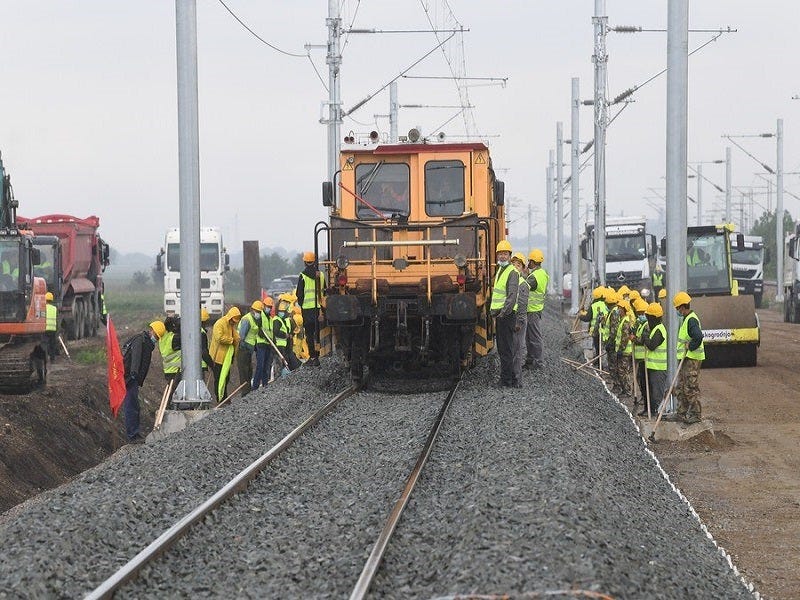ETCS lifts Hungary to 160 km/h while Chinese contractors build Belgrade corridor

Hungary has increased maximum train speeds to 160 km/h on two main lines following deployment of the European Train Control System (ETCS) Level 2. At the same time, Chinese firms are installing ETCS on the Budapest–Belgrade corridor – the first such project by Chinese contractors inside the EU.
Trains can now operate at 160 km/h on the Székesfehérvár–Boba and Boba–Celldömölk lines, up from previous limits of 120–140 km/h. The increase follows commissioning of ETCS Level 2, which allows faster operations while meeting European Railway Agency safety requirements.
Hungarian infrastructure manager MÁV confirmed that only around 400 km of the national network currently uses ETCS, leaving deployment well behind schedule. Under EU rules, all Trans-European Transport Network (TEN-T) core corridors must be equipped by 2030.
Chinese contractors on strategic corridor
China Railway Electrification Bureau Group (CREC) and China Railway Signal & Communication Corporation (CRSC) are equipping the EUR 2 billion Budapest–Belgrade line with ETCS. The project is financed largely by Chinese state loans and forms part of Beijing’s Belt and Road Initiative.
When complete, the 350 km line will allow 200 km/h passenger services. Completion dates remain unclear, with Hungarian officials alternating between late 2025 and 2026. While the technology is certified to ERA standards, observers note that Chinese involvement could create long-term maintenance dependencies.
Transparency concerns
The Hungarian government has classified the project’s economic analysis for ten years, limiting scrutiny of the business case. EU officials have already raised concerns about transparency and procurement procedures. Critics argue that projected traffic volumes may not justify the EUR 2 billion cost.
The line links to the Chinese-operated port of Piraeus in Greece, creating a direct freight route from the Mediterranean to Central Europe. If successful, the project could give Chinese suppliers a foothold in Europe’s signalling market, challenging established players such as Alstom and Siemens.

